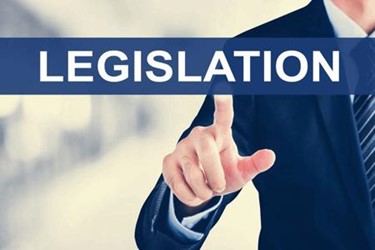Doctors And Researchers Attempt To Stop Right-To-Try Legislation

By Ed Miseta, Chief Editor, Clinical Leader

There are a couple of aspects of the Trickett Wendler Right-To-Try (RTT) Act, currently pending before congress, that bother me. First, there is the name. It seems to imply that patients should have access to new, experimental medicines, and that they currently do not have such access. Of course, this is not true. The FDA has an expanded access program in place, which does get experimental drugs into the hands of patients. Currently, FDA approves more than 99 percent of compassionate use requests, and generally does so within one day or less. Even the form that must be filled out for such a request can be completed in less than an hour. And, contrary to what advocates of the legislation would have you believe, the current program overseen by the FDA is neither slow nor ineffective.
Second, as noted on many occasions by the New York University School of Medicine (NYUSOM) Working Group on Compassionate Use and Pre-Approval Access, RTT legislation may create a second pathway to approval, but will also create a lot of confusion. Only drug companies can decide whether or not to provide their drugs to patients. Therefore, no patient would receive this access under Trickett Wendler who would not have access via the current FDA program. At the same time, the FDA’s objectivity, expertise, and knowledge of the drugs in development can help patients determine their best options. The NYUSOM continues to oppose the legislation, even after the Senate made numerous changes to the original bill.
Expressing Opposition
Now, academics who work at the intersection of drug development and medical ethics are jumping into the kerfuffle, noting they are deeply concerned about the ramifications of a federal RTT law for patients and families. The group is led by Alison Bateman-House of NYU Langone Health, Gregg Gonsalves of the Yale Law School, and four other physicians and Ph.D.s from academia. The academics are sending a letter, signed by themselves and 331 colleagues, to the leadership of the House of Representatives’ Energy and Commerce Committee health subcommittee. The letter notes the group has “strong opposition’ to the pending legislation, as well as other RTT bills currently under consideration by the House Energy and Commerce Committee.
In addition to noting the success of the current FDA program, the letter outlines the history of the current regulatory system in keeping patients safe from harm, citing the thalidomide tragedy of the 1960s as an example of what happens when drugs are given to humans without proper safety review and approval. It further notes that even patients with terminal conditions face the risk of hastened death or a reduced quality of life if they do not receive proper protections.
The group is not alone in its opposition to the legislation. Numerous patient and provider groups, including the American Cancer Society Cancer Action Network, American Lung Association, the Cyctic Fibrosis Foundation, Lung Cancer Alliance, and Leukemia & Lymphoma Society have also expressed opposition to the legislation.
The Right Approach
Opposition to the law does not mean that these groups do not believe more can be done to help patients in need. They just want to see the right approach implemented. If the new law has the potential to create confusion, harm patients, and diminish the oversight of the FDA, then what should be done?
First, Congress and the pharma industry can explore ways to make expanded access a more appealing prospect to sponsor companies. Currently, pharma and biotech companies worry that concerns from the FDA or Wall Street over providing experimental drugs for expanded access could threaten drug development timelines. To solve the problem, legislators must work with industry to mitigate these risks for drug companies.
Second, expanded use programs present a financial concern, particularly to smaller sponsor companies. Smaller firms may have neither the financial nor human resources to create a sufficient supply of a drug or handle the requirements of an expanded access program. Legislators should also work with these companies to make the programs financially feasible.
Finally, legislators could make the expanded access program more appealing to sponsor companies by alleviating concerns over potential liability issues. The NYUSOM working group suggests legislators consider immunity for companies only when three conditions are met. Those three conditions are:
- The FDA expanded access pathway is used.
- Sellers and prescribers act with the belief that a treatment is in the best interest of the patient.
- The patient or a legal representative provides informed consent.
No one is saying the current system is perfect or that it can’t be improved. We can always do more to make exploratory drugs available to patients in need. But improving the system doesn’t mean passing new legislation when the system in place is performing well right now.
